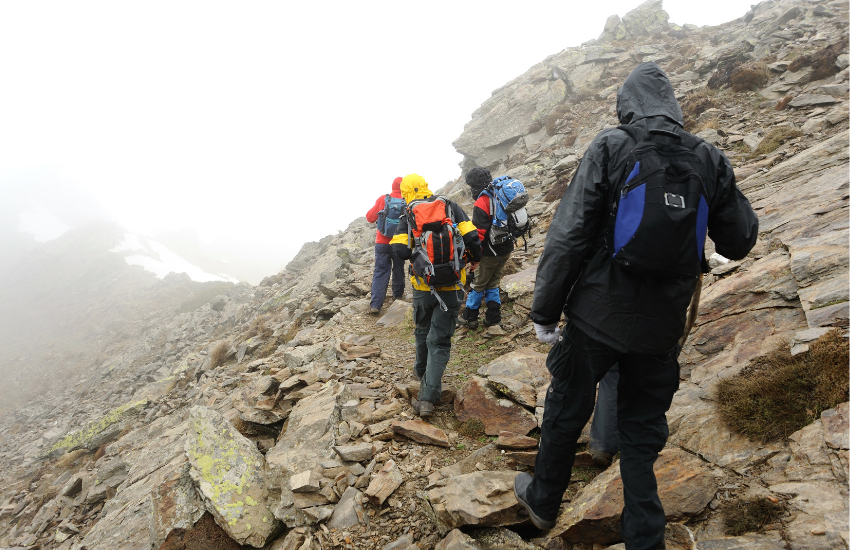Step 5: Show, Don’t Tell is a powerful weapon in the writer’s arsenal for engaging writing.
Text 1:
‘I hate the beach. The first reason I hate the beach is…’
Text 2:
‘The beach. Sand in your pants, itchy sun-burn, squinty bright sky. Too hot on the sand, too cold in the water. No shade to speak of, and no peace to read a good book as screaming packs of kids kick sand onto your sun-dazzling pages. Oh yeah, some holiday.’
Well, we know what these writers think of the beach! But which of these two examples does a better job at evoking the writer’s feelings, prompting our understanding and empathy?
The film in your mind
After reading the two short texts to students, ask them to tell you about the character who is speaking and what they think will happen next.
You can bet they will have more to say about Text 2 than Text 1. Even though we aren’t given specific details, we have so many more clues to go on.
To show, writers use adjectives to evoke the senses (‘itchy’, ‘squinty’, ‘screaming’). When we write this way, we know how the main character feels. The writing starts in the moment, with the main character sitting on their itchy, sandy towel in bright sunshine, wincing as kids scream past, kicking up sand. We can feel just how grumpy they are.
Showing your reader is richer, more evocative and more visual. Telling is for those rare occasions when you want a summary or informative conclusion, or for a super-quick recap of events.
Show me the mountain, don’t tell me you’re going there
One technique to practise Step 5: Show Don’t Tell, is to imagine you’re ‘showing’ your piece of writing as a short film.
‘Show Don’t Tell’ can be overlooked because showing is subtle. Showing relies on restraint. The author knows what emotion or opinion they are trying to convey, but instead of telling it straight to the reader, they stage a gradual revelation.

Here’s a classic revelation in images:
- We see the mountain in the distance and the heroes ask what it’s called.
- A group of people come down the trail from the mountain carrying a stretcher.
- An old mountain guide tells them that no one has climbed it and survived.
- The heroes look at each other. They look at the mountain.
We ALL know that adventure is coming next.
Some of these stories tap into the classic Story Graph (the quest), while others are like little ‘mini-stories’ inside a narrative that help to back-fill the character and bring the writing to life.
Look through a few favourite books with students and pluck out some examples where Show, Don’t Tell is used to make a character and their motivation seem real.
Show, Don’t Tell Action Activity
- Using a blank story board template (try this one), ask students to choose a topic and ‘draw the story’ (or mini-story) in 4-6 images. They should try to avoid words to start with. This is not a comic book or graphic novel, so the reason for having only 4-6 images is to choose the key moments that tell the story.
- Aim for actions and adjectives, sounds and the senses that reveal how the main character is feeling.
- If time permits, do this activity two or three times before asking students to select their best story board and share it with a partner or with the class.
- Students can choose their favourite story board to write as a narrative or a film script. Encourage them to use the story board as a reference about how to show emotions and senses in the images their words create and the experiences their main character has.
Topics:
- A teacher agrees to take his class to the aquarium for the end of term outing, but he has a phobia of fish. Tell the story from the point of view of the teacher.
- A girl is having a fun and exciting holiday with her family. She misses her dog who is at home safe with a friend, but she doesn’t tell her parents because she doesn’t want to seem sad.
- A business person opens his or her briefcase at a really important meeting. There’s a frog inside! But they can’t tell anyone because they need to look serious.
- A thief steals a large painting from the art gallery, then takes the bus to get away. They’re terrified that someone will notice any minute – but no one does!
- The new kid at school is hoping someone will talk to him in the playground.
- A young traveller is in a far-away country on their own. One day the ruler of this country tells them they are chosen to go on a special quest… Decide where and what for. How does the traveller feel?
- Choose your own topic…
Looking for more?
There are over 80 resources for Step 5: Show, Don’t Tell on Teacher Hub.
To learn more about how to get students to Show, Don’t Tell, attend a Workshop One: Seven Steps to Transform Writing.

Become a Seven Steps member


